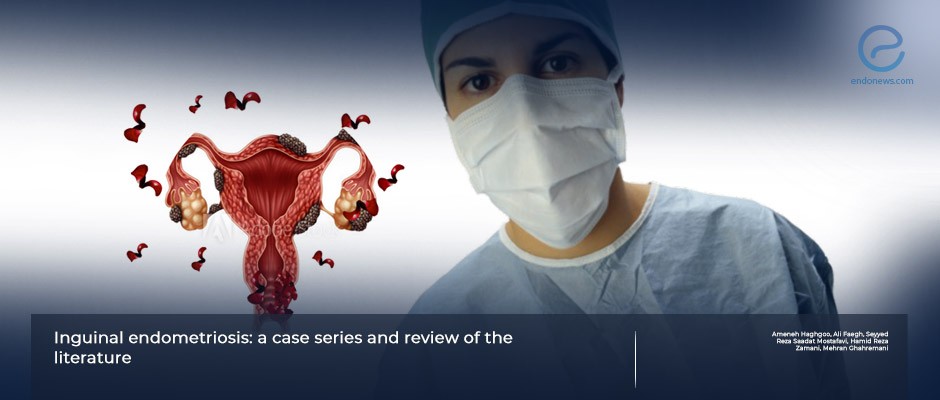Inguinal endometriosis is a commonly neglected differential diagnosis
Apr 4, 2024
Microscopic examination of the suspected inguinal lesions is definitive for endometriosis diagnosis
Key Points
Highlights:
- Until 2022 there were 133 cases of inguinal endometriosis among published medical resources yielding a frequency of 0.3–0.6% in all endometriosis cases.
Importance:
- Inguinal endometriosis can be misdiagnosed with other more common inguinal disorders such as hernia and lymphadenopathy.
What's done here:
- This is a report of eight inguinal endometriosis patients seen in six years in a single center.
Main key features :
- Endometriosis in the inguinal region should be in the differential diagnosis of patients undergoing inguinal herniorrhaphy that have thickening of the hernia sac, hemorrhagic sac fluid, and/or thickened extraperitoneal round ligament.
Lay Summary
A case series of inguinal endometriosis with eight patients from Tehran, Iran has appeared in a recent issue of the Journal of Medical Case Reports.
It is a fact that many inguinal endometriosis cases are undiagnosed since they undergo herniorrhaphy by surgeons without any consideration for endometriosis.
The estimated incidence of inguinal involvement is about 0.3–0.6% in all endometriosis cases and the total number of reported cases is 133 till 2022.
This report presents eight Iranian cases of inguinal endometriosis seen in a single center between the years 2017 to 2022. The average age was 36.3 years. Five patients were nulliparous, and the other 3 were multiparous. However, the authors also discuss an additional patient in the main manuscript with a remark that the "patient had mild size superficial endometriosis implantations surrounding the entrance of the hernia sac, but she had no inguinal endometriosis".
Seven patients complained about inguinal swelling or pain, and six mentioned exacerbations in their menstrual period. Seven patients had dysmenorrhea, while 6 had dyspareunia, and 6 had pelvic pain.
Ultrasound was diagnostic in four patients. Among six patients treated with hormones, four showed an increase in the size of endometriosis. The involvement was right-sided in 87.5% of patients, and among the four patients undergoing surgery, three had involvement of the proximal round ligament.
Inguinal endometriosis is rare and needs further diagnostic evaluations, especially in patients having inguinal mass with aggravated swelling or pain in the menstrual period. Due to a wide range of differential diagnoses in groin masses, endometriosis in this anatomic area may be neglected. The most precise post-operative diagnostic step is the histopathological examination of the inguinal mass.
Research Source: https://pubmed.ncbi.nlm.nih.gov/38429816/
Inguinal endometriosis round ligament inguinal hernia histopathology

